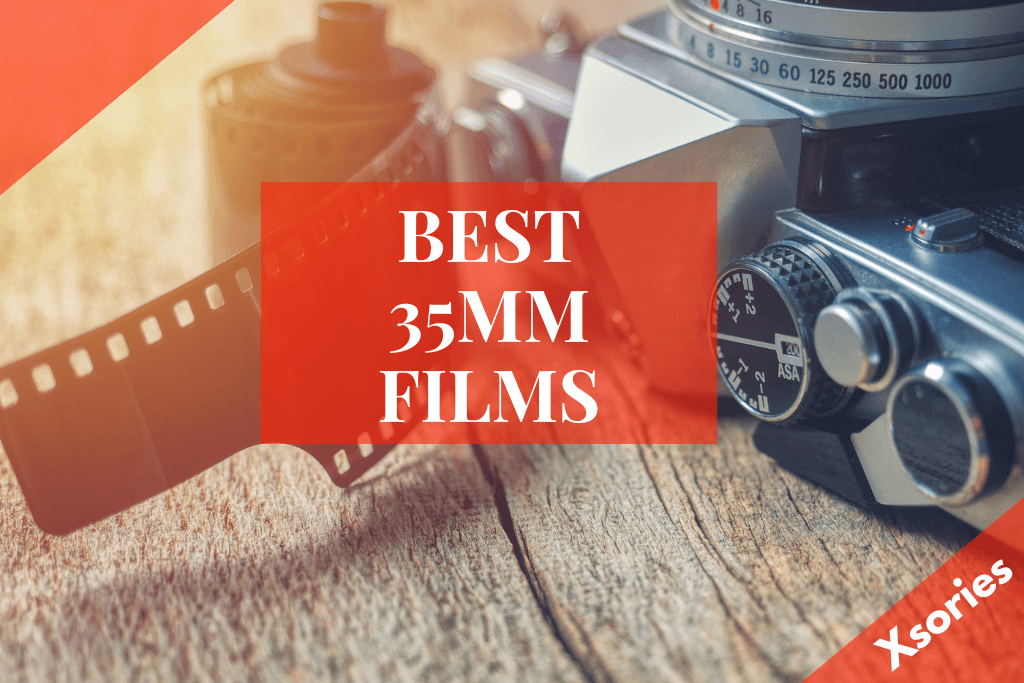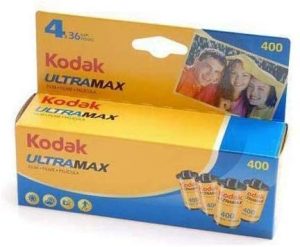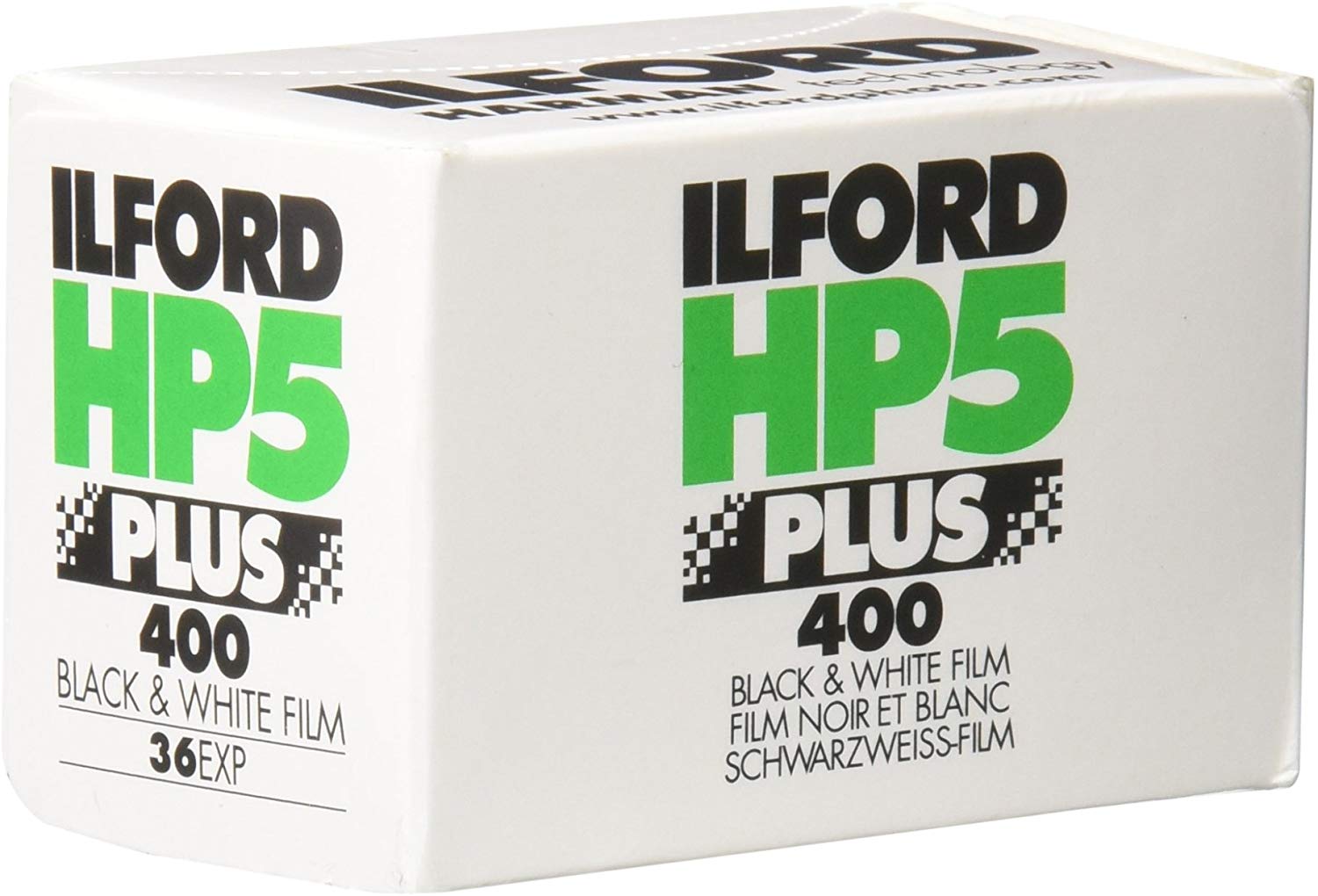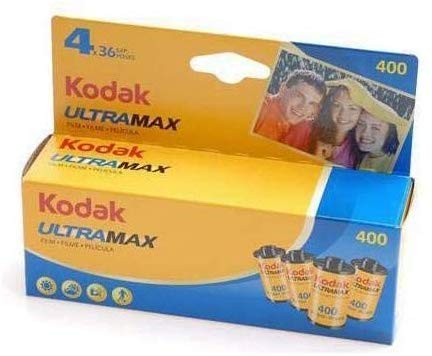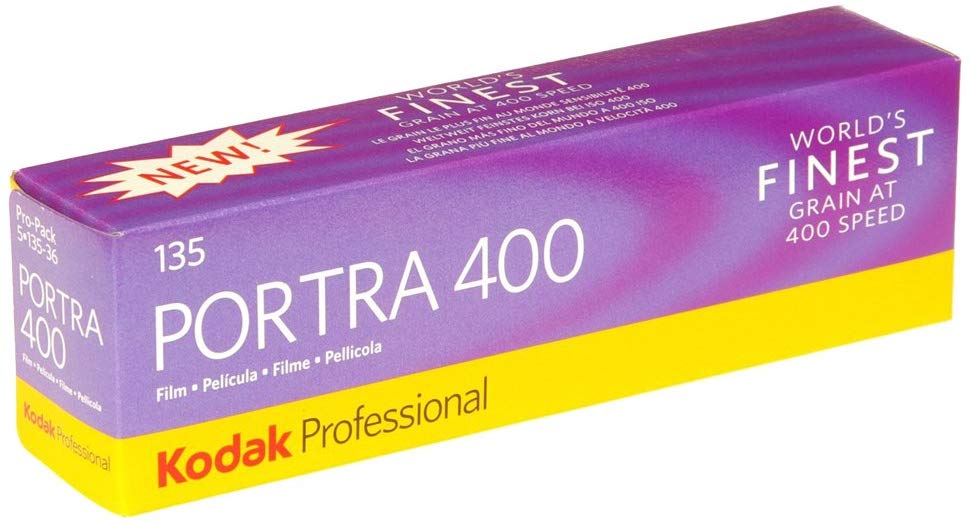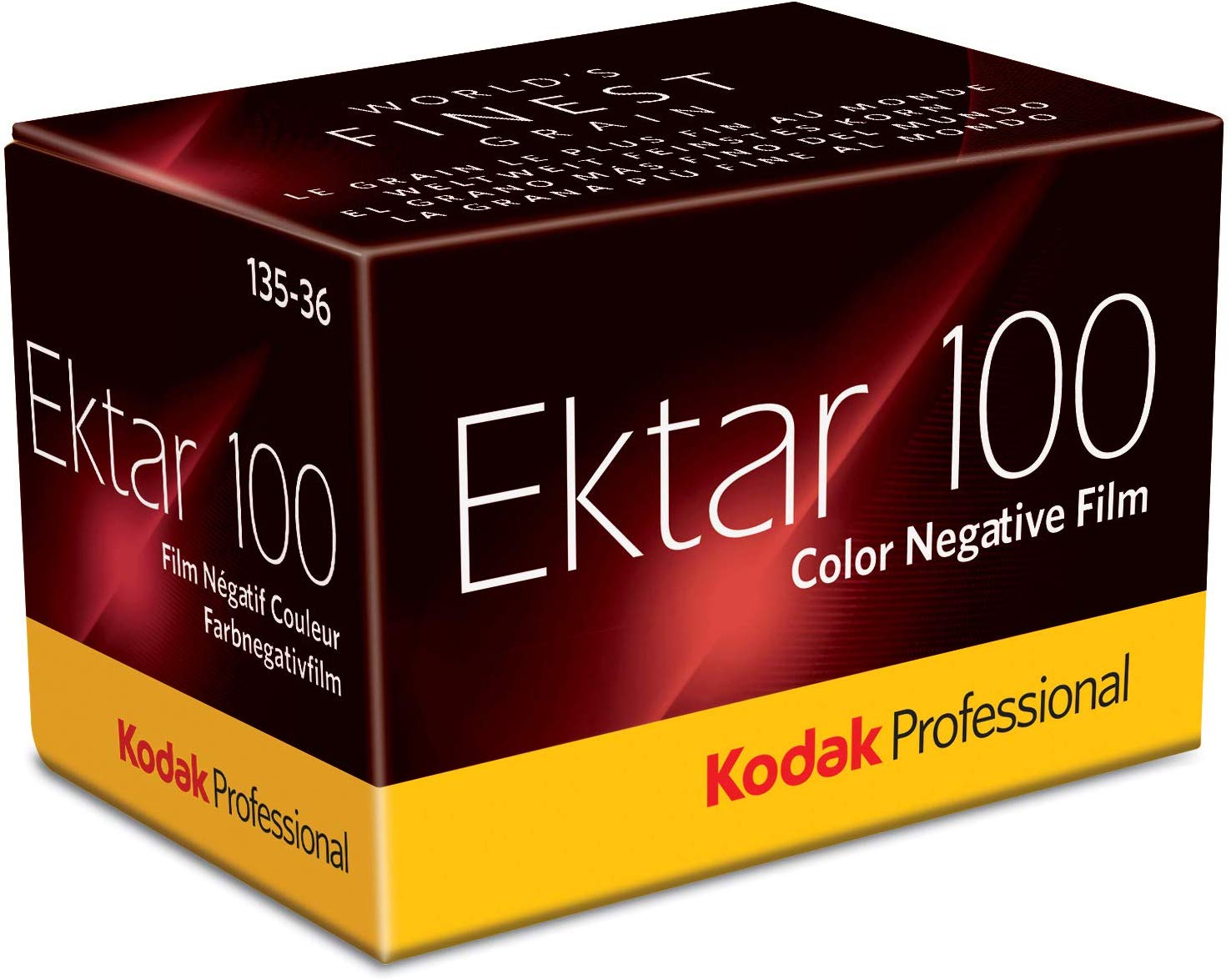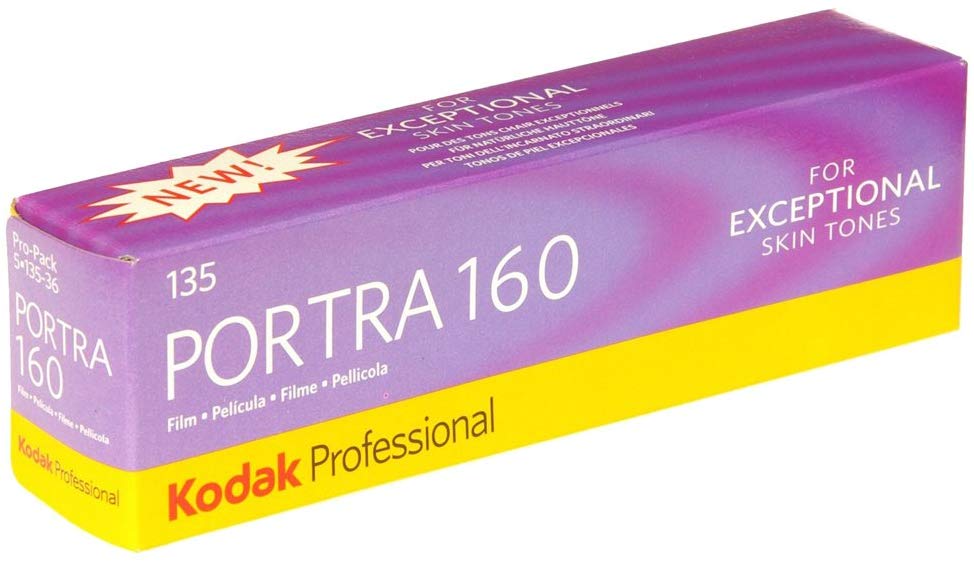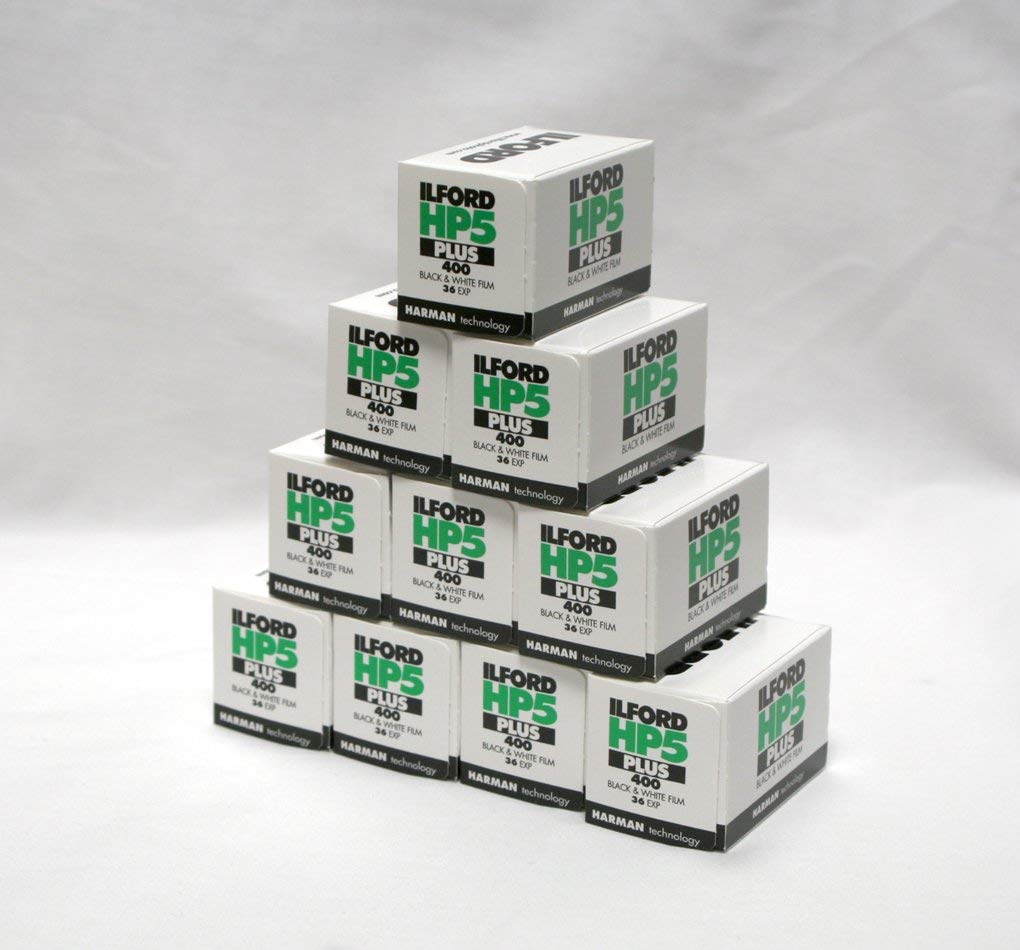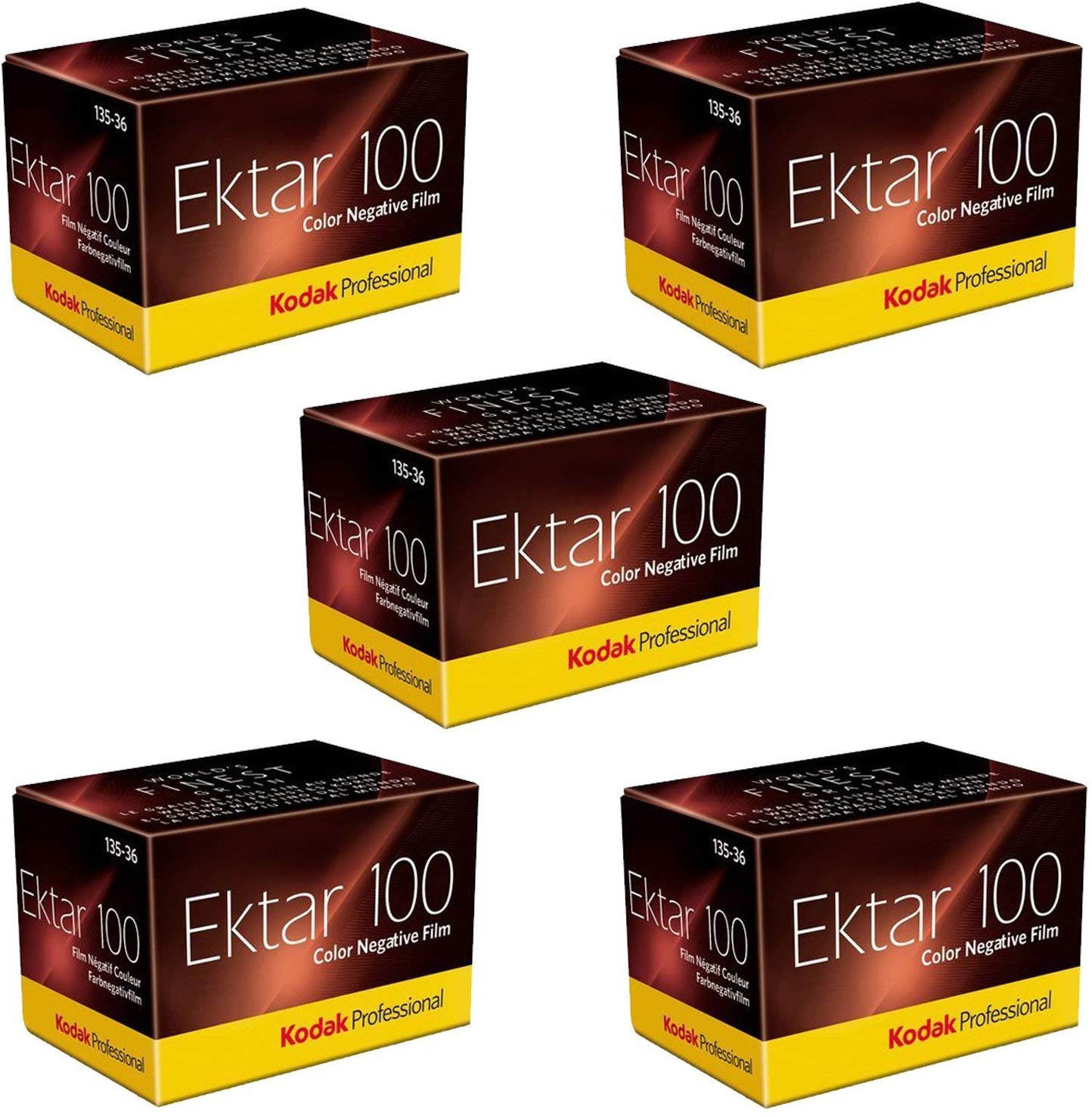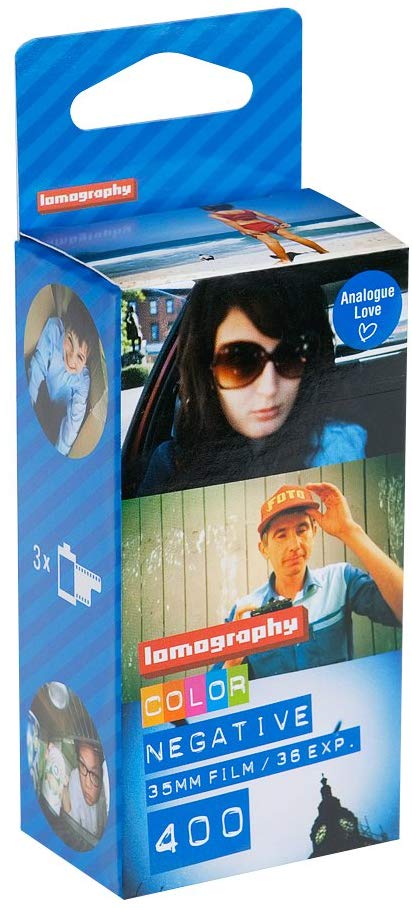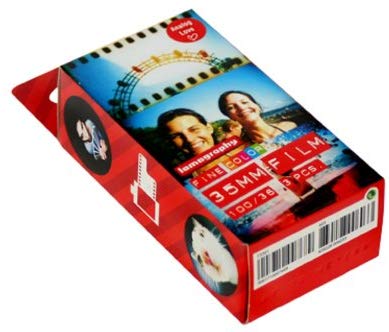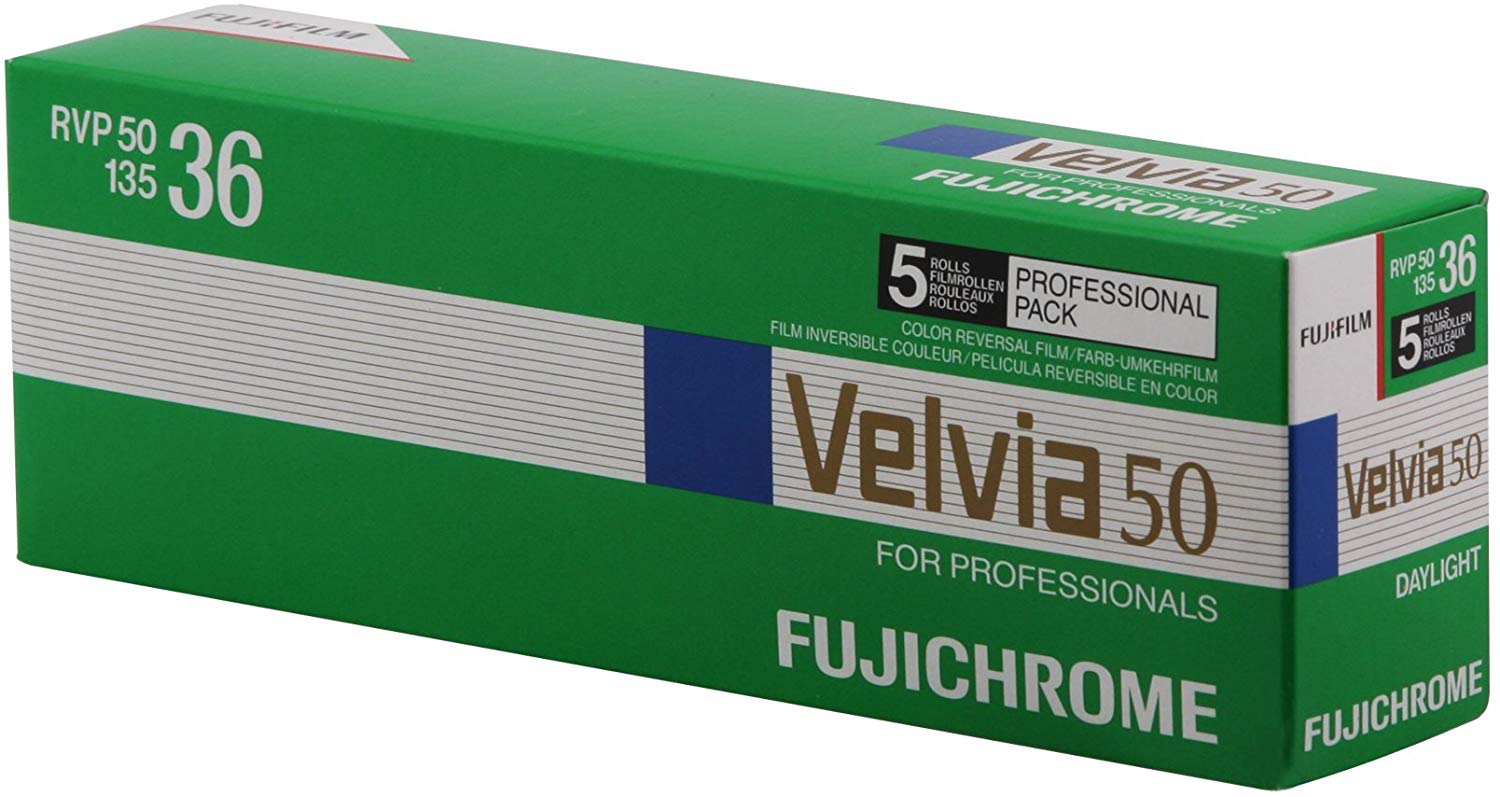Even though the digital world is growing at an extremely high rate, analog photography still remains relevant in this day and age. This has led to an increased number of film brands. But this transition has made it even hard for professional photographers to choose quality film brands. And in this roundup, we are going to break down the quality models to help you choose the best 35mm film for your photography needs. But before, then, here is a quick comparison table of the products we have featured.
Best Pick
4x Kodak UltraMax 400 Speed 35mm Film is a C-41 friendly film. With an ISO speed rating of 400, this film will yield high-quality photos without calling for a dark room. Compared to other films of its class, this Kodak model has managed to stand out from the competition, which makes it our best pick.
Budget Pick
Ilford 1574577 HP5 Plus, Black and White Print Film is the best 35mm film for the money. The high-speed medium contrast film yields negatives of fine grain and high sharpness in all lighting conditions. Better still, the film has been developed to respond well with high film speeds and push processing, making it the go-to film for your general-purpose and press photography.
Quick Comparison: Top 10 Best 35mm Films Review
1. 4x Kodak UltraMax 400 Speed 35mm Film
Kodak is one of the popular films for professional photographers. With this film, you do not need a dark room. You can capture, develop, and scan your negatives, and the results are amazing.
With a 400 speed, you get to enjoy pretty great shots. One thing that makes this film stand out from the competition is its ability to produce high-quality photos and ease of use, which makes it the best Kodak 35mm film.Pros
Cons
2. Ilford 1574577 HP5 Plus, Black and White Print Film
In case you may be looking for the best 35mm black and white film for scanning, then this Ilford HP5 plus could be all that you need. The HP5 plus series is a fast speed and medium contrast film which delivers excellent quality photos.
Unlike some films which limit you on the quality of light, this model does not. With this film, you get to enjoy high-quality negatives with exceptional sharpness and ultra-fine grain.
With an ISO rating of 400, this film is specially formulated to work perfectly well with film speeds up to EI 3200/36 and push processing. This makes the HP5 plus series the go-to film for press and general-purpose photography.Pros
Cons
3. Kodak Portra 400 Professional ISO 400 Film
Kodak has designed yet another amazing film. The Portra 400 is one of the leading high-speed color negative and fine grain globally. It has an ISO rating of 400 and one of the best 35mm film for skin tones. Taking advantage of this film will offer you stunning natural skin tones and brilliant color production.
Due to its unmatched color saturation on a wide range of lighting conditions, this Porta 400 pro series is the go-to film for your outdoor, fashion, travel, and nature photography. The film works best where fast action is required, or lighting conditions cannot be controlled.
Pros
Cons
4. Kodak Ektar 100 Professional Film
With an ISO rating of 100, this Kodak film will deliver unique edges and fine details. The film integrates entertainment Kodak imaging’s film technology for stunning photos.
Its ability to produce photos with ultra-vivid color and optimized sharpness make it one of the world’s finest grain color negative film. So whether you are a rookie or a professional photographer, this Kodak Ektar 100 could be all that you need in your photography kit.Pros
Cons
5. Kodak 35mm Professional Portra Color Film
Under different lighting conditions, this Kodak film will give you elegant portraits at any moment. For every shot you make, this film gives you sharp, fine-grained images with balanced shadow and clear details.
The film fine grain allows you to print color negative films large than the traditional ones. With this film, you can now say goodbye to your photography woes. The Kodak T-grain technology delivers bright and elegant prints with exceptional resolution and skin tones.
Its ability to produce sharp and accurate natural colors makes it the best 35mm film for portraits. Every pack comes with five rolls with each roll offering 36 exposures, which will last you long.Pros
Cons
6. Ilford HP5+ 36 exp B&W Film
This Ilford HP5+ B&W film is designed to work perfectly well for push processing and film speeds of up to EI 3200/36. At these conditions, the film maintains better shadow and well-separated mid-tones for fine-grain photos under all lighting conditions.
Being a high-speed medium contrast film, you can use if for your press, action, and general-purpose photography. With an ISO rating of 400, this film yields typically stunning negatives with high sharpness and fine grain.
Its ability to deliver outstanding photos under all lighting conditions makes it the best 35mm film for outdoor photography. It's easy to use design makes it an excellent pick for your beginner photo classes.Pros
Cons
7. Kodak 35mm Ektar 100 Color Negative Film
If you are looking for a 35mm film with extraordinary negative enlargement with outstanding color, then this Kodak Ektar 100 could be the end of your photography woes. The medium speed film offers you amazing benefits to make your photography more fun.
Whether you are looking forward to spicing up your travel, nature or fashion product photography, this Kodak Ektar won’t disappoint. The film yields smooth fine grain with high sharpness.
Regardless of your photography experience, this Kodak film will give you great results. Unlike other films which cannot be scanned, this film can be scanned without any fear of losing detail.Pros
Cons
8. Lomography 400 ASA 35mm color film
Regardless of the weather, this film will provide you with great results. With an ISO speed rating of 400, this will yield vivid colors and extraordinary sharpness. At 24 by 36mm, this film will give you high saturated photos with heavy black, cutting white and stunning colors.
When used along with Lomography 35mm camera, you will get exceptional results for your outdoor photography needs.Pros
Cons
9. Lomography 603 35 mm 100/36 ISO Fine Color Negative Film
Lomography has yet another fantastic film for your analog photography. The film is compatible with 35mm cameras, including Action Sampler, Helga, Fisheye, and Fisheye 2 cameras.
With ISO speed of 100, this film will yield stunning colors, with small grain, high contrast, and resolution. Inside every pack are three rolls of 36 exposures, which can last you long. Due to its promising results, this Lomography film can be a great gift idea for a rookie or advanced amateur photographer.
Pros
Cons
10. Fujifilm 16329173 Velvia 50 Color Slide Film
If you are looking for the best 35mm color film for daylight photography, then look no further than this Fujifilm 16329173 series. The film boasts of an ISO speed of 50 and can retain ultra-fine grain, high sharpness, and vivid color production.
With this film, you get to enjoy high-quality Chroma and elegant skin tones. Its three-dimensional depth and full-bodied image make your photography even more fun.
Overall, this Fujifilm color slide film is designed to offer you outstanding results for all your pull/ push processing.Pros
Cons
Benefits of using film in your Photo shooting
Easy to use
Shooting with a film helps you hone your photography skills. Due to their easy to use design, film shooting is popularly used in photography training centers.
Economical
The world of digital photography is changing at a drastic rate, which has made it costly for photographers. Each year, more advancement is done in digital photography, which forces you to upgrade to new expensive cameras. This is costly as compared to film photography, where you do not need to keep on upgrading your camera now and then.
Though you will be required to buy a film, in the long run taking advantage of film photography remains the best option. Better still, you still get great results similar to digital cameras, a reason why even during this time and era, shooting with film remains relevant.
Allows you to be more creative
Rookie photographers have the desire to take more photos as they polish their skills. But as much as practice makes perfect, using film will limit photographers from capturing any photo without applying the necessary tips.
Making mistakes during the shooting process will be quite expensive, making beginner’s to master the secret behind getting quality photos.
Promising results
Shooting photos with film yields vivid colors with good contrast better than digital cameras. This is because films are not limited to sensors, and bringing in creativity will give you outstanding results.
High resolution
A film captures photos of high resolution, which are far better than digital cameras.
Factors to consider when buying a 35mm film
Films come in different types, and before you pull your credit card, you need to be sure that your preferred film is compatible with your camera. However, at times it can be challenging to choose the right choice. But in this guide, we will address all that you need to know before spending any penny. Keep reading
Film type
The market offers different film options, which include black and white negative film, color transparency, and color negative. But one thing worth noting is that every film is suited for specific photography, and no matter the type you choose, there is no single film that fits every photography application.
So by the end of the day, the film type you buy will be dictated by your personal preferences.
Black and white negative film
As the name suggests, black and white negative films lack any color. The films are easy to use and allow you to produce a negative. The negative can later be scanned either digitally or analogically printed in a dark room.
One thing that makes these films stand out is that they are easy to process and can be printed at home. Normally the black and white negative film has three layers. The first layer consists of a light-sensitive emulsion layer that contains silver salt, which reacts with the developing chemical and absorbs light.
The primary role of the chemical is to remove the silver and uncover the image.
The second layer is designed with plastic and acts as a backup to the emulsion. The third layer stops the light from bouncing back to the emulsion. Besides, the third layer also helps prevent blur images and foggy films, making your photography more fun and enjoyable.
The quantity of silver in the black and white negative film determines the amount of light required for you to achieve optimal results. Films with fine grain require more light while the counterparts require less light.
Since fine-grained films require more light, they are a great pick for your outdoor photography. On the other hand, films with high ISO are ideal for your indoor or night-time photography.
Due to their ease of use, the black and white negative films are an excellent pick for rookie photographers.
Color negative films
Unlike the black and white films, the color negative has an automatic color masking feature. The color is automatically reversed to complementary colors for enhanced color production.
The film uses a C-41 chemical for processing. The film yields exact natural color and better contrast. You usually get your negative and print when the film is processed normally.
One thing that makes color negative films stand out is that they offer a wide range of ISO speeds and excellent exposure latitude. This makes them go to films for weddings and portrait photography.
Color transparency
Color transparency film is also referred to as slide or reversal film. The positive color films use E-6 chemicals for processing. When processed normally, the film yields a positive image or slides.
Though the color transparency film uses an E-6 chemical, you can also use C-41 chemical on your negative in cross processing. Each slide film has unique features and may vary in color when cross-processing is done.
Some turn blue, and others are red or even lighter with great contrast. Unlike color negative films, slide films have low ISO speeds. However, through cross processing, the slide films yield high saturated, vivid colors and good contrast, which makes it great for Lomography.
Though slide films do not have latitude exposure like the color negative, getting good exposure will produce beautiful and breathtaking images. But in regards to longevity, C-41 is more likely to fade with time as compared to E-6.
ISO speed rating
Film speed is rated as per ASA or ISO standards. They can be categorized in three, that is, slow, medium, and fast. The film speed determines how sensitive the film is to light.
Low-speed films are less sensitive to light. Slow films usually call for longer shutter speed, which works perfectly well for daylight photography. But when capturing fast-moving objects, or night time photography will not yield good results.
Fast speed films, on the other hand, enable you to capture images in dark or in low light.
Exposure latitude
If your light metering isn’t correct, you will end up with under-exposed or over-exposed negatives. The exposure latitude of your film is the ability of your film to withstand under or overexposure and yield great results.
Slide films do not tolerate both exposure latitudes and are not recommended for use, not unless you are shooting for artistic purposes. Black and white films are designed to tolerate both latitude exposure, and any exposure errors can be corrected during the printing or developing process.
Color negatives, on the other hand, are formulated to withstand overexposure and a stop of under-exposure. Shooting at the stop will help resolve any errors that may occur.
Number of exposures
The number of exposures determines the number of photos a single film can produce. This may vary from one brand to another. However, there are no specific film exposures, and this will depend on personal preferences.
Cost
Every film comes with its price tag. And before you invest in your preferred model, you need to know how many rolls each pack has and at which cost. This will help you plan ahead of time and avoid any financial constraints.
How to store 35 mm negative film
Have you ever stored your negative film, and after some time, you realize that you cannot get the same results? It’s probably because of poor storage. But if you put these tips in use, you can store your memorable treasures for generations without distorting the quality.
Packing them on acid-free, and photo safe boxes
Packing your negative films in photo-safe and acid-free boxes prevents them from dust or any harmful chemical that may erode, or fade the color.
Keep storage temperatures in check
Negative films can be damaged by high temperatures, even if they are stored in photo-safe boxes. This causes the negatives to have a vinegar-like odor. To prevent any chances of decay it is highly advisable to store your films at low temperatures away from any moisture.
How to shoot with an expired film and still get outstanding results
Just like most products which have expiry dates, so are photographic films. However, while these films have a shelf life, the expiry date can be reduced by other factors like radiation, sun exposure, and humidity. When a film expires, the color fades, contrast reduces, and grain increases.
These changes do not happen so fast, so you do not need to bin your film. With excellent skills, you can use an expired film and still get the great results you have ever wanted. To achieve this, you need to reduce the ISO of your film to half for every decade. For instance, if you have a film with ISO 400, cut it to ISO 200.
Common film photography rookies do and how to avoid them
Loading the film incorrectly
Knowing how to load your film correctly is one of the great moves you can make a rookie photographer. And below is how to go about it
- Insert the film tip inside the spool while ensuring the teeth are fully engaged on the sprocket holes.
- Once you have inserted your film, avoid opening it as this will expose it to light, sun, or radiation, which may adversely affect the quality of your film. In case you need to determine if your film is fully engaging and moving forward or not, you need to take advantage of the film's advance feature. Keep an eye on the rewind knob is turning. If the knob does not turn, then that means the film is not fully engaged or might have broken. Open your camera to check if there is a problem
Investing in high-end films
If you are a beginner, you may find yourself buying the most expensive films with an expectation that they will give you exceptional results. However, while a quality film plays a role in the quality of your photos, it can be costly since you haven't started making any money.
To hone your photography skills, you need to learn the tricks until you perfect.
Lack of patience
Learning how to make a great shot requires you to focus and be patient. Avoid shooting photos aimlessly, or else you will end up investing much in films.
Incorrect exposure
Different films will call for varying exposure, so you need to be vigilant when capturing your photos. If you under-expose your film, you will not be in a position to recover details on the shadow.
Common film and scan problems and how to resolve them
Discolored or faded stripes during film scanning
Light leaks on your camera can cause dull or discolored streaks. This happens when your camera backlight seals get damaged. To determine if your light-tight seal is the cause, you need to shoot another film and check if it comes out clean. If it does, then the problem could be with your camera.
Another cause of discoloration is fogging. In most cases, fogging can be confused to be light leaks. Usually, fogging can be as a result of accidental light exposure, heat-damaged film, or aged film.
To find the root cause, you need to use another film. If the film comes out clear, then your previous film was faulty, damaged, or exposed to light.
Dull and gray images
When your film is overexposed, you will get gray or dark photos. Exposing your negatives to light for long makes them too dense resulting in dull photos. To resolve the problem, consider using a light meter.
Fade and grainy scans with low contrast
Under-exposure of your negatives to light for a short period will result in faded, grainy, and low contrast scans. Using a light meter can help get the right exposure.
If the under-exposure is not so intense, you can repair or adjust any affected frames in Photoshop or lightroom.
Large black splotches or irregular waves on the image
If your film gets accidental spills or gets wet as a result of condensation, you may notice irregular waves and discolorations. In case you suspect your film could be damp or you accidentally spilled any liquid, it is highly advisable to send your film to the lab for examination.
Make sure the film is tightly packed to avoid the liquid from drying. However, films damaged by water are beyond repair but never conclude its water damage. But if you happen to spill liquid on your film, taking your film to the lab won't help.
FAQ
What is a 35mm film?
A 35mm film is a standard photographic film for SLR (Single Lens Reflex) for motion picture and still cameras. Usually, the film format measures 36 by 24mm.
Why you need a 35mm film?
A 35mm film is one of the highly versatile films you can get. When used along with a full-frame camera, the film allows you to have a standard view of the landscape.
What does C-41 mean?
Kodak introduced C-41 in 1974 as an upgrade from C-22. The C-41 is a chemical used in color print film developing process. The C-41 is also known as CNK-4 by Konica, C-16 by Fuji, and AP-70 by AGFA.
Images for the C-41 process are formed of dye. By nature, dye normally changes color after some time a reason why C-41 negatives fade.
Is colored film better than black and white?
Black and white films are readily available and affordable as compared to the colored ones. Color films, on the other hand, are C-41 friendly and take a short time to process, unlike their counterparts.
But comparing the two, color films degrade faster as compared to black and white. Whether colored or black and white, the best film will depend on your preferences.
